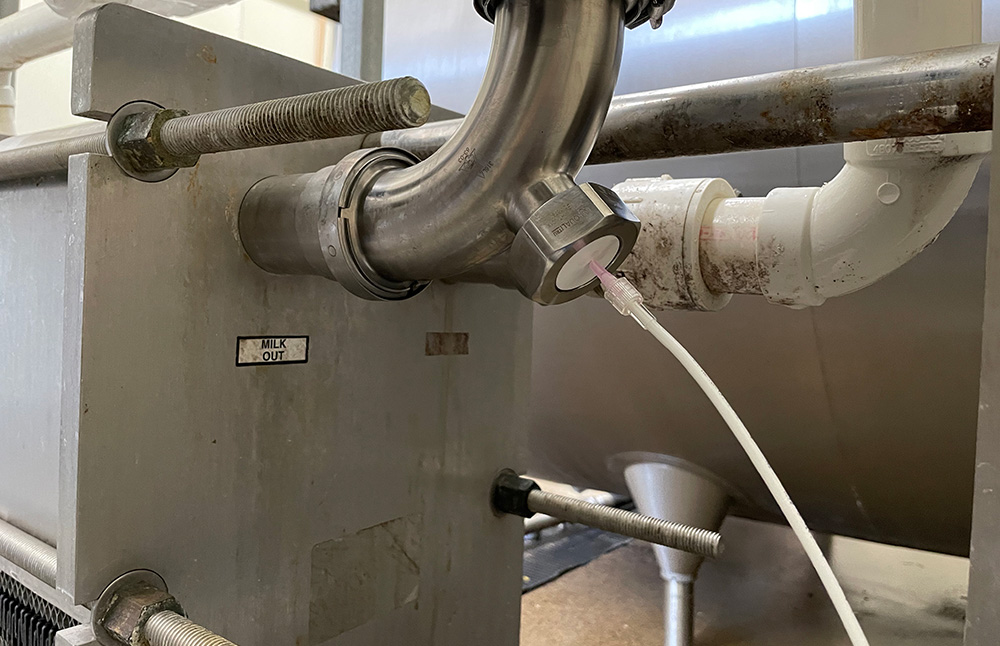Bovine Viral Diarrhea (BVD)—Testing, Detecting, and Managing
Bovine Viral Diarrhea (BVD) can have a devastating impact on dairy herds. Management of the disease requires a comprehensive program of vaccinations and monitoring. Persistent infection (PI) carriers of the Bovine Viral Diarrhea Virus (BVDV) can pose a real and ongoing threat to overall herd health.
The Cornell Animal Health Diagnostic Center’s website indicates that BVD is currently one of the costliest diseases of cattle.
“Bovine viral diarrhea is costing the U.S. cattle industry as much as $2.5 billion a year due to sick animals, treatment expenses, and untimely deaths.” (Source: BVD costs U.S. cattle producers millions, by Barbara Duckworth).
Bovine Viral Diarrhea (BVD)—A devastating disease
Bovine Viral Diarrhea (BVD) is caused by the Bovine Viral Diarrhea Virus (BVDV). The virus is widespread, which puts most herds at risk of infection. In the susceptible herd, BVD can be a severe and costly disease. Unfortunately, the cost is only one of the problems and not the worst part. BVD may be present in the herd, and you may not even know it without the proper testing and detection protocols in place.
What are some of the problems caused by BVD?
- Reduced reproductive performance
- Increased premature culling
- Infected cattle can develop acute diarrhea and fever, leading to death
- Lengthy and costly recovery periods with decreased milk production
- Compromised immune systems
- A viral disease that antibiotics cannot treat
How does BVD spread?
The BVDV spreads through contact with other recently infected or persistently infected (carrier) animals that are shedding the virus or, less frequently, through contact with contaminated surfaces. Cattle of all ages are susceptible to acute infections.
However, cattle with persistent infection (PI) developed the disease in utero when the mother was exposed to BVDV at less than 125 days of pregnancy. If not removed from the herd, they perpetuate the disease by continually shedding the virus.
If BVDV gets into a non-vaccinated or improperly vaccinated herd, it will spread from animal to animal. A strong BVDV vaccination program will minimize this transmission type and allow containment of the virus before it infects many of the herd.
Note that vaccines are not 100% effective and do not induce good immunity in heavily stressed or poorly conditioned animals. In addition, continual exposure to BVDV from one or more PI carriers may cause infection in vaccinated animals, so the herd may experience sporadic abortions and infertility.
Bulk tank or string sampling for detecting BVDV
The Animal Health Diagnostic Center at Cornell University, College of Veterinary Medicine has developed a test protocol using milk from bulk tanks or string sampling to detect BVDV as a step to identifying acutely infectious cows or PI carriers within a herd.
Is bulk tank testing a reliable method for detecting BVDV in a herd?
Bulk tank sampling for the detection of bacteria and mycoplasma has been an accepted practice for many years. A 1995 report from the Ohio Agricultural Research and Development indicated that bulk milk samples might help detect BVDV persistently infected animals in the lactating herd using Polymerase Chain Reaction (PCR).
Cornell’s test protocol uses PCR but also includes parallel testing by virus isolation (VI) procedures (culturing viable “somatic” cells). Cornell confirms that in >95% of their cases, there is agreement between PCR results and the virus isolation tests.
Bulk tank or string sampling protocol includes using dual tests
Cornell’s test requirements include a minimum of 200 ml of fluid milk per sample, with a maximum of 400 cattle in one sample to avoid dilution of BVDV. String sampling (submitting multiple samples) is recommended for dairies milking more than 400 heads.
The milk sample is centrifuged, and a pellet of somatic cells is collected and used for sampling. Both BVD PCR and VI tests are performed on each milk sample; using both tests together increases the sensitivity for detecting BVD.
A BVD positive test indicates that 1) acutely infected cattle are circulating BVD, 2) the presence of one or more PI cattle or 3) the presence of both acute infection and PI animals.
While a positive test result is significant, negative results must be interpreted with caution, particularly without information regarding the PI status of non-lactating animals in the herd.
Testing for BVDV in the individual animal in the absence of hard evidence for its presence in the herd is expensive and may discourage future testing when a valid reason does exist.
Bulk tank/string sample testing is one method to generate the needed “hard” evidence for individual cow testing. However, BVD is a complicated disease to manage. Therefore, readers are encouraged to discuss a BVD vaccination and monitoring program with their herd veterinarian.
Read Cornell University’s article, Bovine Viral Diarrhea: Background, Management and Control, to learn more about their bulk tank testing protocol and its rationale.
- Learn more about QualiTru’s representative sampling solutions for dairy farms.
- Have questions about string sampling? Ask Our Experts!
- View our catalog of sampling and process monitoring products





